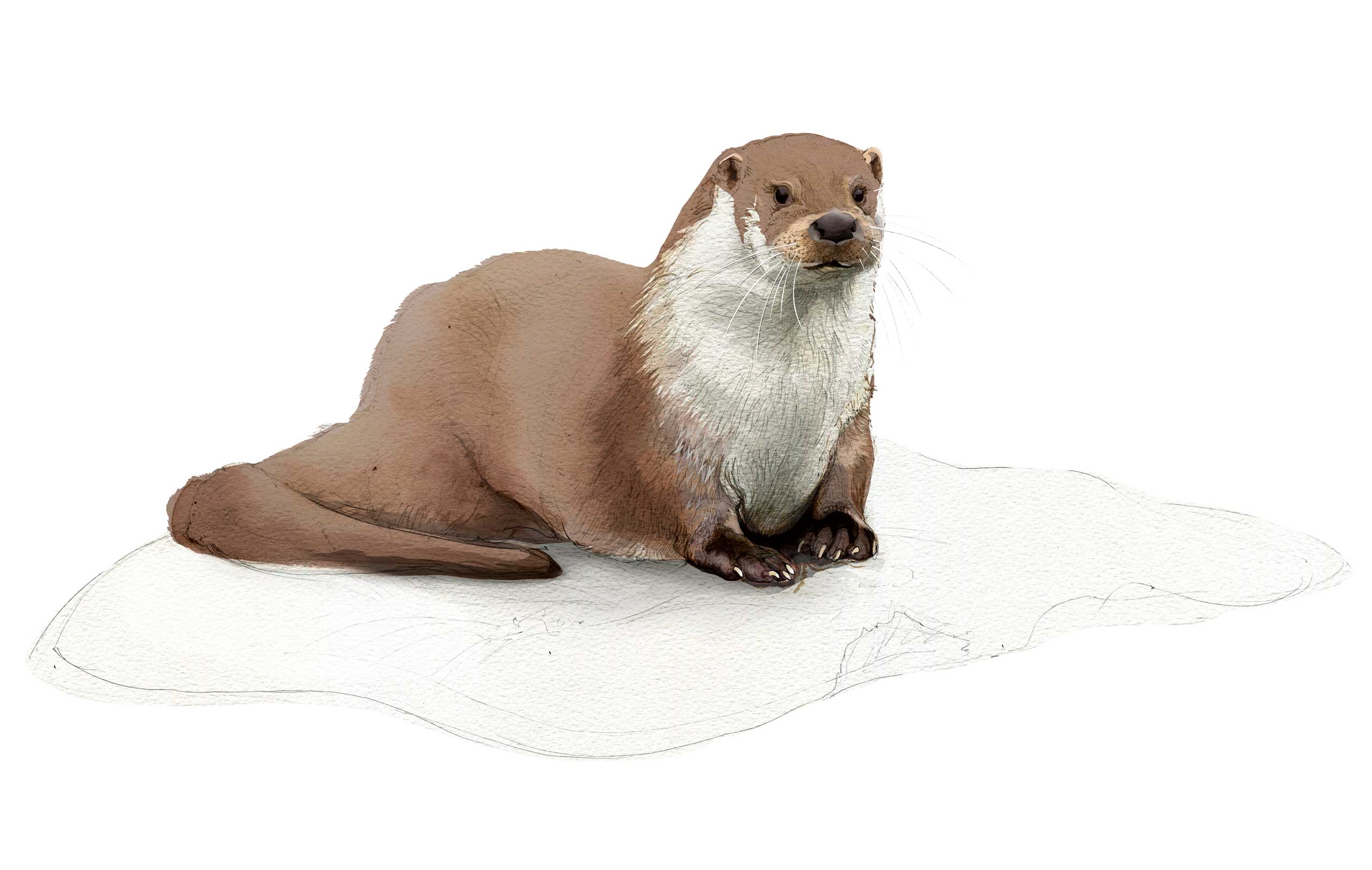
Lutra lutra
Rivers, lakes and coastlines in every county in England. Otters prefer clean rivers with plentiful supplies of fish and small birds and animals to hunt. They also need thick bankside vegetation, with places to hide away during the daytime.
A slender body up to 120cm long, plus a thick tail about 40cm long. They have short legs, webbed feet and very small ears. Their fur is brown on top, but paler underneath, especially on the throat.
Otters are usually nocturnal, and very secretive and difficult to see. When active they spend much of their time in the water. They hunt at night for eels and many kinds of fish, although they also catch birds that live by the water, such as coot, moorhen and ducks. They travel large distances and some are known to use 20-kilometre stretches of river. Otter cubs are born in a den, called a holt, which the mother makes amongst tree roots or rocks on the river bank. The mother teaches the cubs how to catch food and they usually stay with her for a year before they head off to look after themselves.
Because of loss of habitats and water pollution, especially from pesticides, by the 1980s there were only a very few otters left in the North York Moors, on the Upper Derwent River and the River Esk. A project started in 1990 to release wild otters into these rivers that had previously been injured or abandoned and then looked after at the Vincent Wildlife Trust centre in Scotland. Over a decade scientists noticed that the numbers of otter footprints and spraint (otter dropping) sites increased, suggesting that the population had grown. The National Park Authority continues to work with landowners, farmers and fishing clubs to improve the rivers for otters and other wildlife.